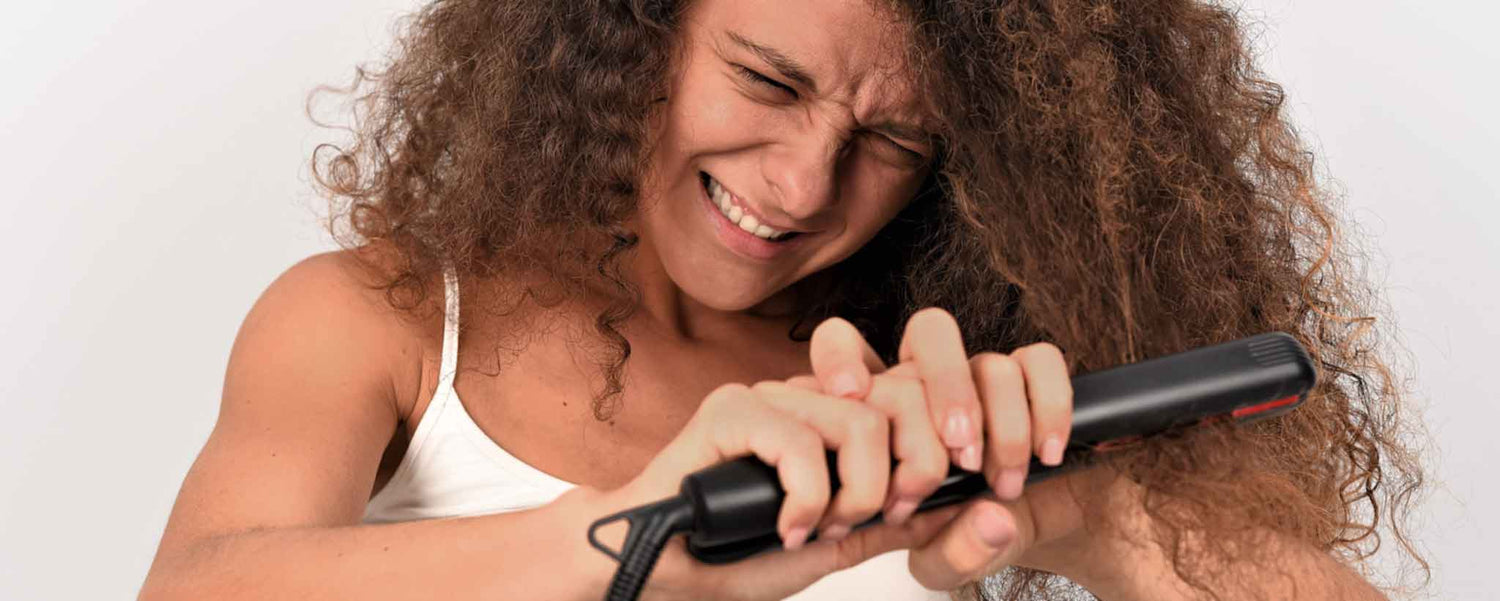Publish 2 September 2021
Too much heat or too many chemicals can damage hair follicles. This results in a form of alopecia that requires dermatologists and cosmetologists.
Gettin’ Your Hair Did
In more youthful days, as a woman of color, you wore every popular hairstyle. Gossiping passed the hours at the hairdresser’s or in your girlfriend’s kitchen while getting your hair washed, pressed, and curled. Before flatirons were mainstream, you touched up those wild roots by heating your hot comb on the stove.
Then you discovered perms allow you to eliminate the hot comb altogether. Oh, and those weaves? Girl, necks would snap when you strutted into the room. After much hair breakage from overheated hot combs, you are now known for your fashionable collection of wigs.
Heating petroleum-based hair products with a hot comb can cause severe hair burns and permanent scalp damage. [1] It is difficult for your hair follicles to recuperate from this. Hot Comb Alopecia, known formally as central centrifugal cicatricial alopecia (CCCA), affects more women than men worldwide.

Classic hot comb, usually heated by an unregulated head on a stove. Corded models are available.
What is Hot Comb Alopecia?
Hot Comb Alopecia is the progressive degeneration of hair follicles. It usually begins at the crown region of the scalp. The gradual degeneration of the follicle’s external root sheath ultimately causes a follicle scar. [1] Hot combs are not the only cause of CCCA. Using harsh chemicals is a precursor to this form of alopecia.
Dermatological Views on CCCA
Fortunately, CCCA can be reversible if caught early. So consult a dermatologist immediately and avoid using heating tools for the best outcome.
Why Your Hair Is Falling Out
Researchers of dermatology identify many factors leading to CCCA. This includes heating tools, dyes, chemicals, braiding hair tightly, and drugs. Genetics can also be a CCCA trigger. [2,3]

11‐year‐old daughter with clinical and histological features of CCCA. Her natural virgin hair has no history of chemical or mechanical trauma. [3]
This disorder commonly affects African American women due to the shape of their hair follicles. The term central centrifugal cicatricial alopecia, adopted by the North American Hair Research Society, describes the pattern of damage. [3]
Do You Have Hot Comb Alopecia?
CCCA is similar to female and male pattern alopecia. This is why it has the informal name Hot Comb Alopecia.

35‐year‐old mother with severe CCCA. Hair grooming involved a combination of chemical relaxers, tight braids with extended hair, and sewn-in hair weaves. [3]
Initially, CCCA begins at the crown and then spreads gradually in a centrifugal direction. Hair loss is in patches due to follicular degeneration, which is your alarm to seek professional dermatology care. [4] It is more difficult and expensive to recuperate from a late diagnosis. Symptoms can include:
- Scalp Inflammation
- Tenderness
- Itchy Scalp
- Burning Sensation
- Hair Loss
Get professional treatment as soon as possible for the best results.
Getting Your Hair Back

Astounding advances in dermatology make it easier to treat CCCA now than it was possible in previous years.
- Professionals reduce inflammation with anti-inflammatory medicines. Consult a dermatologist who can prescribe creams to relieve the pain and soothe the scalp. Anti-inflammatory medications include hydroxychloroquine, cyclosporine, tetracycline, and potent topical steroids. [5]
- Making lifestyle changes is essential. Avoid heating tools, tight braiding, and shampoos with high chemical percentages.
- Follicular Unit Extraction is the most popular method of hair transplantation with promising results. The three-step process involves collecting hair follicles from another part of the body and creating recipient sites in the scalp. Then, installing the hair, similar to planting seeds. [6,7]
Cosmetology Guidelines for CCCA
These cosmetology guidelines can help prevent CCCA:
- Organic shampoos
- Healthy diet
- Stress-free life
- Soft brushing
- Avoid tight braiding
Save Your Hair
Your scalp is part of the integumentary system, which includes your skin, hair, and nails. It is important to maintain a barrier against infection. So you should not disregard scalp inflammation.
If CCCA runs in your family, strictly follow cosmetology guidelines to ensure a CCCA-free life. Carelessness can lead to baldness. Check for symptoms periodically and consult a dermatologist immediately with concerns.
Co-author Zarsha Naureen is a writer specializing in beauty, health, and wellness.




